Original URL: https://www.theregister.com/2012/11/02/souse_scrapple/
Post-pub nosh deathmatch: Souse versus scrapple
El Reg mixes it up with the Pennsylvania Dutch
Posted in Science, 2nd November 2012 15:00 GMT
Our popular post-pub nosh deathmatch series takes a decidedly Pennsylvania Dutch turn this chilly November, as we present for your drunken dining pleasure two stateside dishes suggested by our gourmet readers.
The contenders weighing in for this culinary clash are souse and scrapple, a couple of carnivore-friendly concoctions requiring dedicated pre-boozer prep, but offering immediate deployment from the fridge when you stagger home from a night on the tiles.
First up to the plate is souse - a cold cut related to "head cheese", aka "brawn" in England, "potted heid" in Scotland, or Sülze in Germany.
In its most basic form, head cheese is the the meat from the boiled head of a calf or pig, left to set in the natural gelatin from the unfortunate animal's skull.
There are plenty of international variants on the theme using different beast bits, such as pig's trotter, and which may include seasoning, vegetables, and other extravagances not available to the medieval peasantry who first discovered the delights of skull scrapings in aspic.
The Pennsylvania Dutch version of head cheese, dubbed souse or pon haus, uses tongue, pig's ear and trotter as its basic ingredients - the latter to provide vital gelatin, although extra will be required to ensure a solid final result.
The recipe is not to be confused with Caribbean souse, which is an entirely different animal made up of pickled meat and trimmings soaked in water, lime juice, hot pepper and further flavoursome delights.
We don't mind admitting that it was with a certain amount of trepidation that we approached the assembled souse raw ingredients...
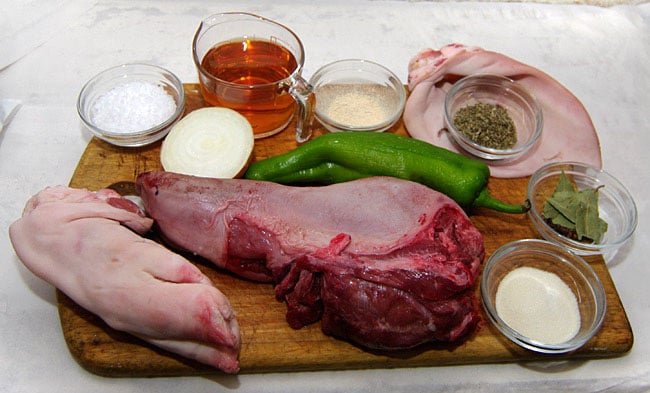
...which are specifically:
- 1 beef tongue
- 1 pig's trotter
- 2 pig's ears
- 20g salt
- 2 onions, chopped
- 1 Italian sweet pepper
- 350ml white wine vinegar
- 1g garlic powder
- 3g dried sage
- 1g ground black pepper
- 8 peppercorns
- 8 cloves
- 2-3 bay leaves
- 15g gelatin
So, let's get down to it:
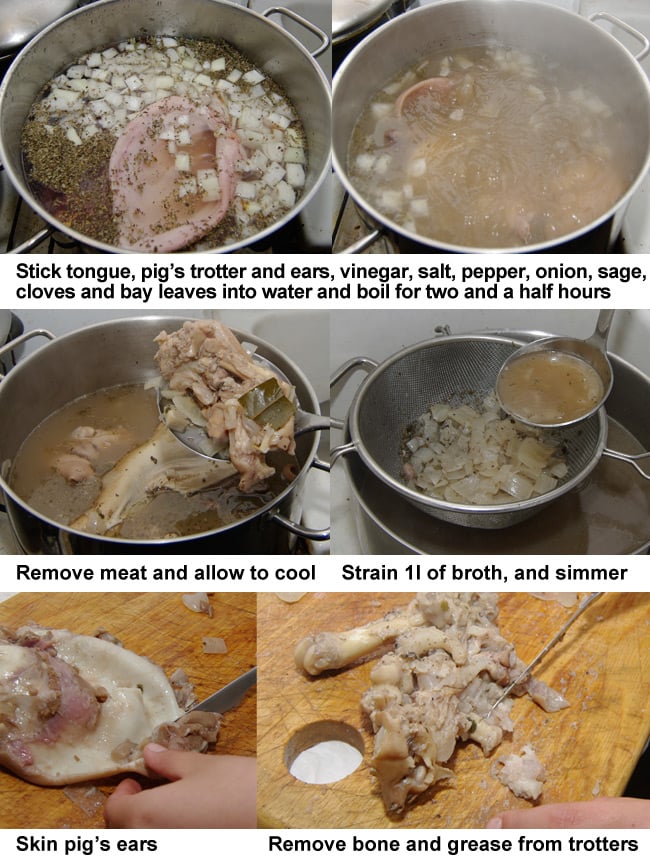
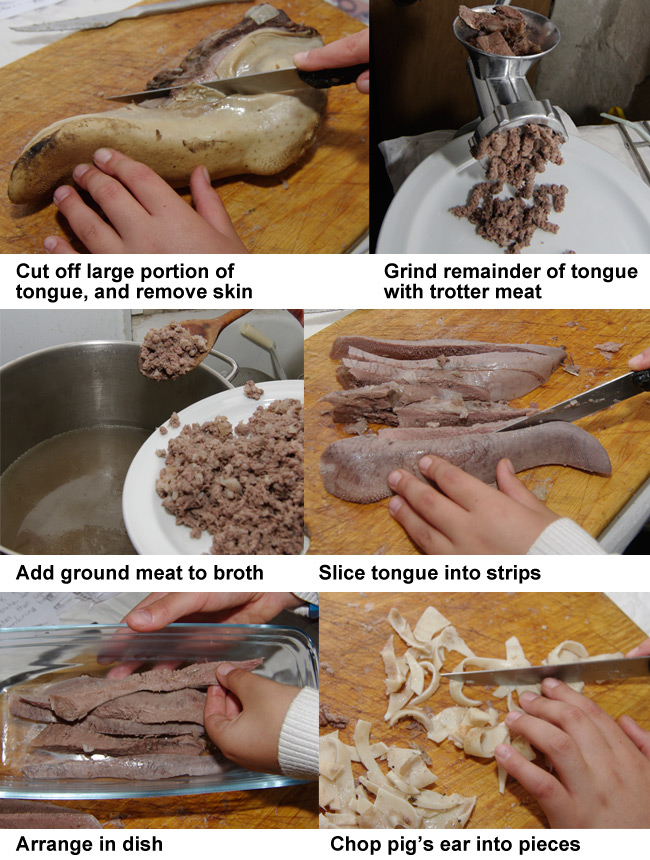
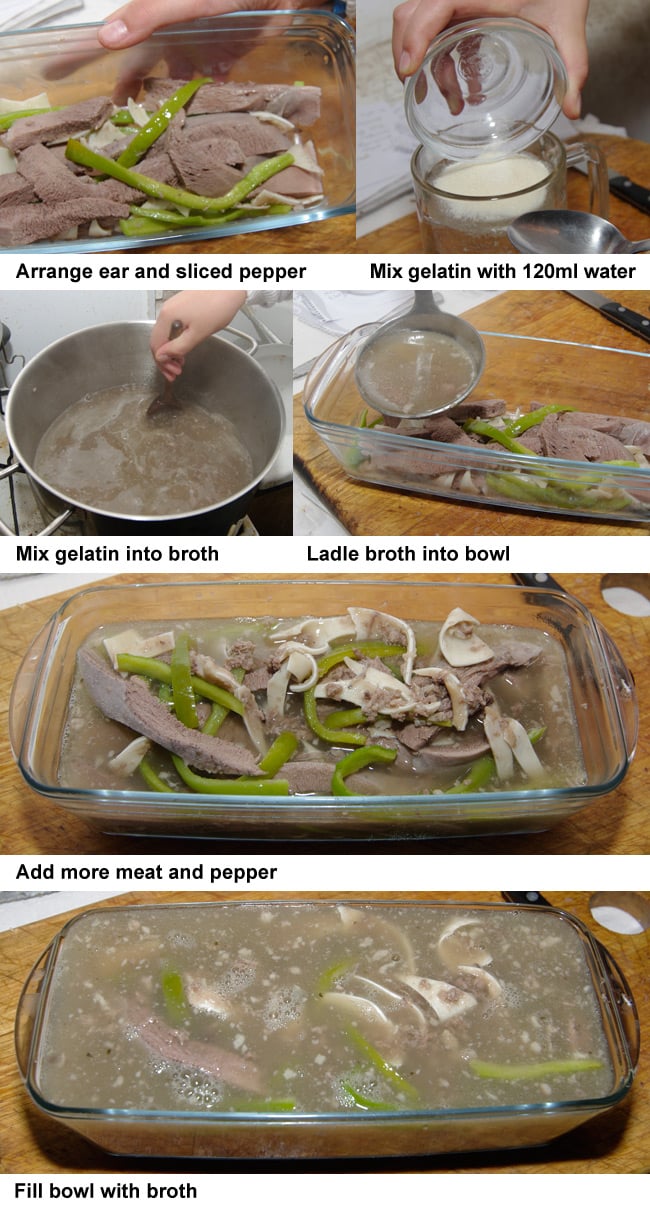
Once you've got your souse brew into the bowl, you should leave it for a couple of hours at room temperature, until it starts to gel, then stick it in the fridge overnight. This is what it looks like the next morning...
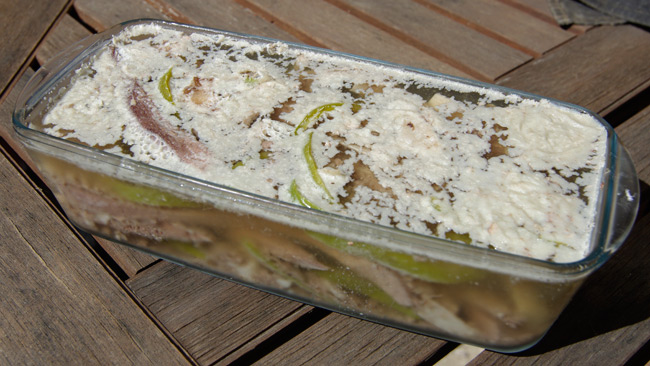
...and here's the finished result, after careful removal from the bowl:
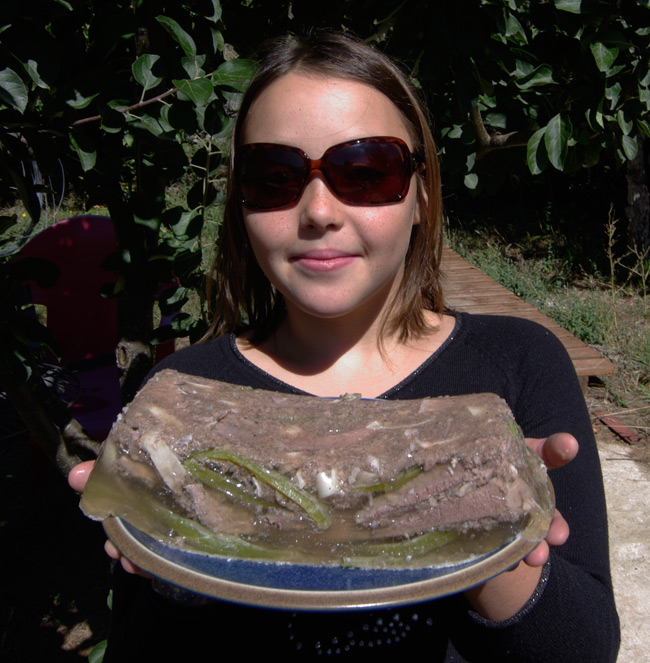
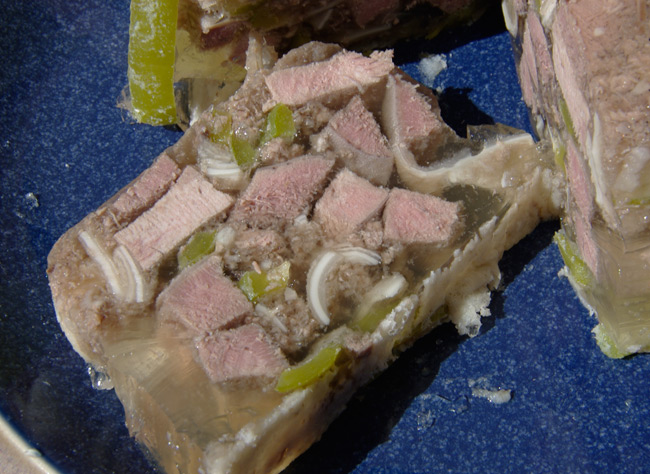
With the souse set for serving, we got stuck into scrapple, which is a mush of ground pork and cornmeal in loaf form, served as fried slices.
Our scrapple uses shoulder of pork ("pork butt" in the US) as the meaty heart of the recipe. If you want to get old school, then ask your butcher for hog offal, and throw the head, heart lungs, liver, etc, into the pot to create your scrapple base.
Here's the full roster of requirements...
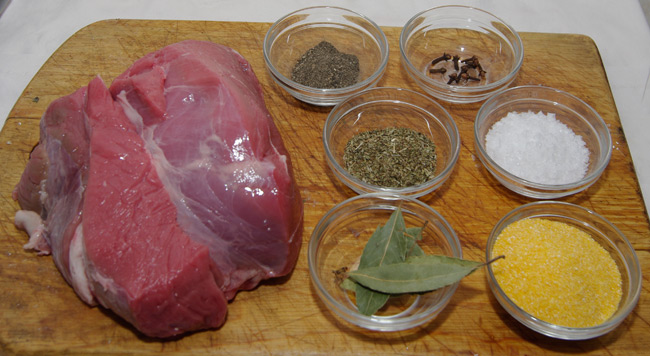
...which comprise:
- 1.5kg pork shoulder
- 5g ground black pepper
- 8-10 cloves
- 5g dried sage
- 20g salt
- 2-3 bay leaves
- 500g cornmeal
Predictably, getting our hands on a proper coarse cornmeal proved impossible hereabouts, so we're obliged to Jude Karabus in El Reg's London bureau for arranging an emergency airlift of polenta, which worked just fine.
Here's the proof, in our step-by-step photo guide:
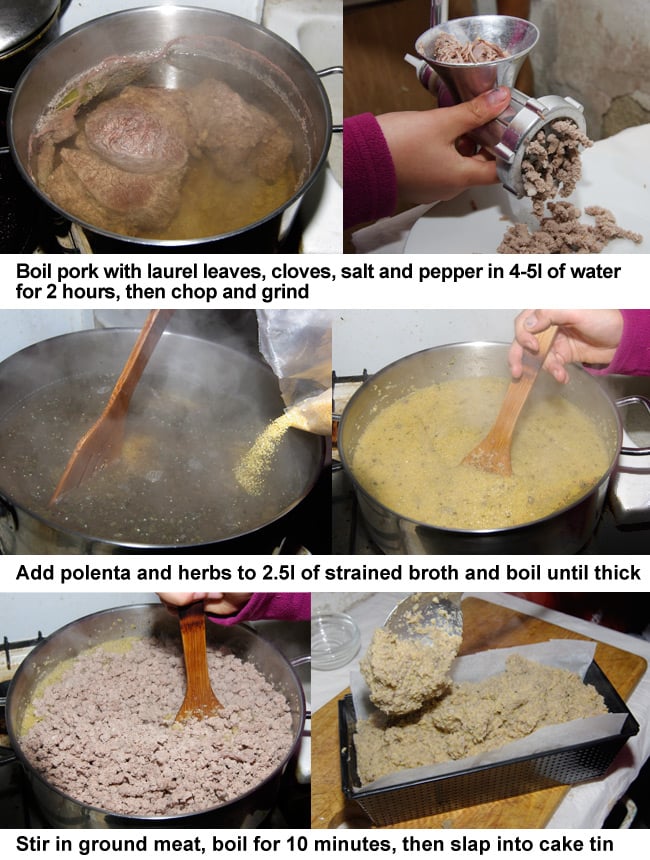
A couple of points. It's important to make sure the cornmeal mush is pretty stiff before you stick in the meat. The spoon should stand up in it, although it shouldn't be too thick. If if does look like it's starting to display the properties of drying concrete, stick in a bit more broth.
The seasoning is vital in scrapple. Check your brew and add extra to taste. You might like to throw in some thyme and nutmeg to the boiling broth, and we even considered adding a smidge of chilli powder, before deciding to hold on that for a future scrapple experiment.
It's worth lining the sides of the cake tin with greaseproof paper, as we did, since it helps get the scrapple out, after a night of solidification in the fridge:
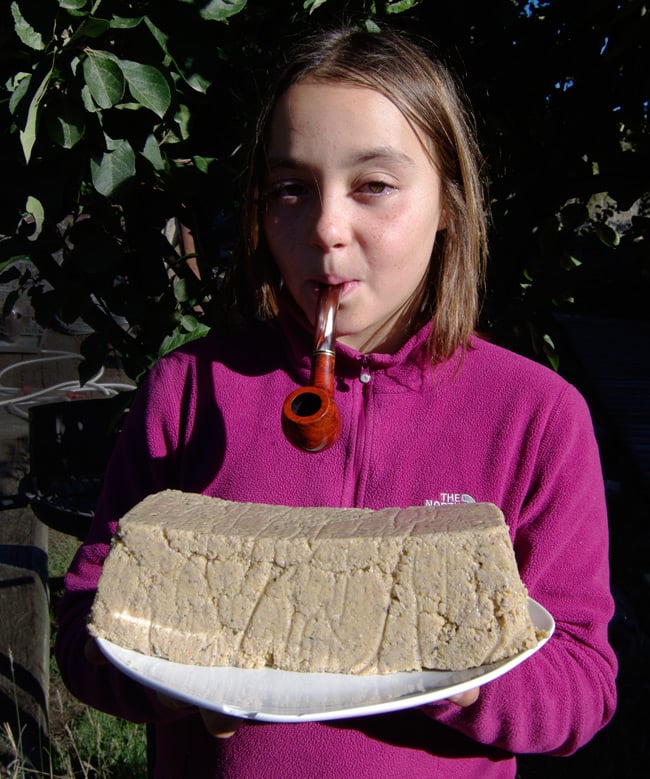
With our magnificent loaf ready to roll, we hit Bar Almanzor, in my local town of El Barco de Avila, where the usual tasting panel had already quaffed several ales in anticipation of the impending deathmatch.
The verdict on souse can be summarised as follows: Spaniards don't like cold tongue action. Local builder Fernando's face says it all:

"It'd probably be fine if it was hot," he grimaced, ignoring my attempt to explain the effect of a microwave oven on the gelatin.
In fact, souse is delicious on a slice of toast, although I'm prepared to concede it's probably not to everyone's taste, and certainly won't be gracing Fernando's plate again in the near, or indeed distant, future.
It's safe to say, though, he'd neck another platter of scrapple at the drop of a hat, as would his missus Lourdes and bar owner Juanjo:
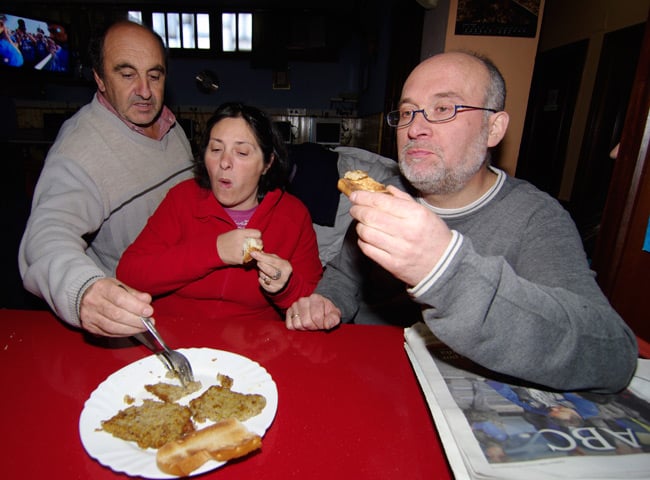
Likewise, my daughter Katarina didn't take much persuading to get stuck in with a fork:
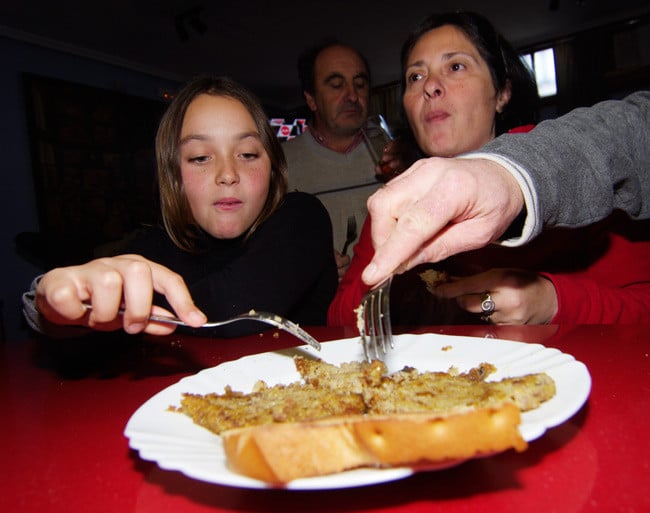
The result of this deathmatch is pretty clear, then, although to my mind both recipes offer excellent post-pub fare, once you done the legwork.
Souse has the advantage of being available for immediate consumption, while you actually have to go to the bother of frying scrapple, if you can manage that in a sozzled state without torching the kitchen.
A safer option is to reserve your scrapple for the hangover breakfast, which is exactly what I did. Delicious...
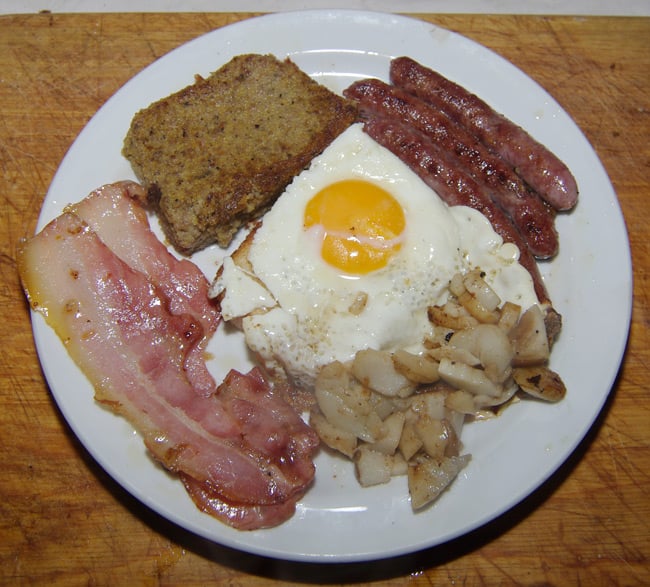
For the record, the above platter boasts a special treat: fried Boletus edulis - the cep, or penny bun mushroom. Thanks to Tito, he of Bar Tito and our Paper aircraft Released Into Space (PARIS) mission, for donating a couple for my post-post-pub-deathmatch fry-up. ®
Bootnote
If you'd like to nominate your favourite nosh for a future deathmatch, we welcome suggestions here.